Joint pain impacts mobility and quality of life for millions across the United States and worldwide. Struggling with stiff, aching joints? You’re certainly not alone. This comprehensive guide explores various methods for joint pain relief, tailored for adults aged 30-60 seeking home solutions. We will delve into the common causes and symptoms, explore practical home remedies including specific exercises and natural approaches, discuss supportive joint pain relief products like supplements and devices, and clarify when it’s crucial to seek professional medical advice. Let’s explore the path to better joint pain relief together.
Affiliate Disclosure: This post contains affiliate links from Amazon, ShareASale, and iHerb. We may earn a commission at no extra cost to you if you make a purchase through our links. See our full Disclaimer for more details.
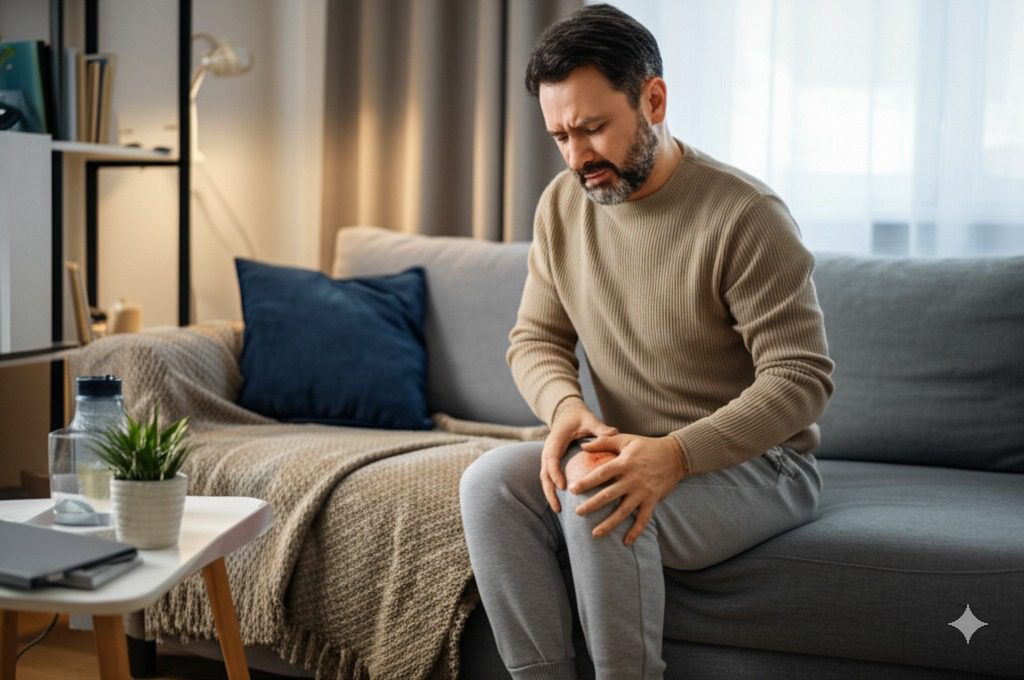
Causes of Joint Pain
Understanding what triggers joint pain is crucial for effective management. Several common culprits cause the aches and stiffness many experience. Identifying the potential cause helps tailor the approach to relief.
Arthritis: This is the most well-known cause of joint pain, affecting millions globally. It’s an umbrella term for joint inflammation, with two prevalent forms: Osteoarthritis (OA) and Rheumatoid Arthritis (RA).
Osteoarthritis, often called “wear and tear” arthritis, occurs when cartilage wears down over time. This leads to bone-on-bone friction, typically affecting weight-bearing joints like knees, hips, and hands. According to the Mayo Clinic, OA is more common in older adults and those with a history of joint injuries.
Rheumatoid Arthritis is an autoimmune disorder where the immune system attacks the joint lining. This causes inflammation, swelling, pain, and eventual joint deformity, often in smaller joints like wrists. RA can also lead to systemic symptoms like fatigue and fever.
Other types of arthritis include gout, caused by uric acid buildup leading to sudden, severe pain in joints like the big toe, and psoriatic arthritis, which affects people with psoriasis, causing joint pain and skin symptoms.
Injury: Acute injuries like sprains, strains, or fractures can cause joint pain. Overuse from repetitive motions (e.g., typing, sports) also contributes, especially if untreated. For example, athletes with past knee injuries may develop chronic joint pain due to cartilage damage over time.
Aging and Wear: As we age, cartilage thins and synovial fluid decreases, increasing friction and stiffness. Factors like excess weight or past injuries worsen this natural process. Additionally, age-related bone density loss (osteoporosis) can contribute to joint pain by altering joint alignment and stability.
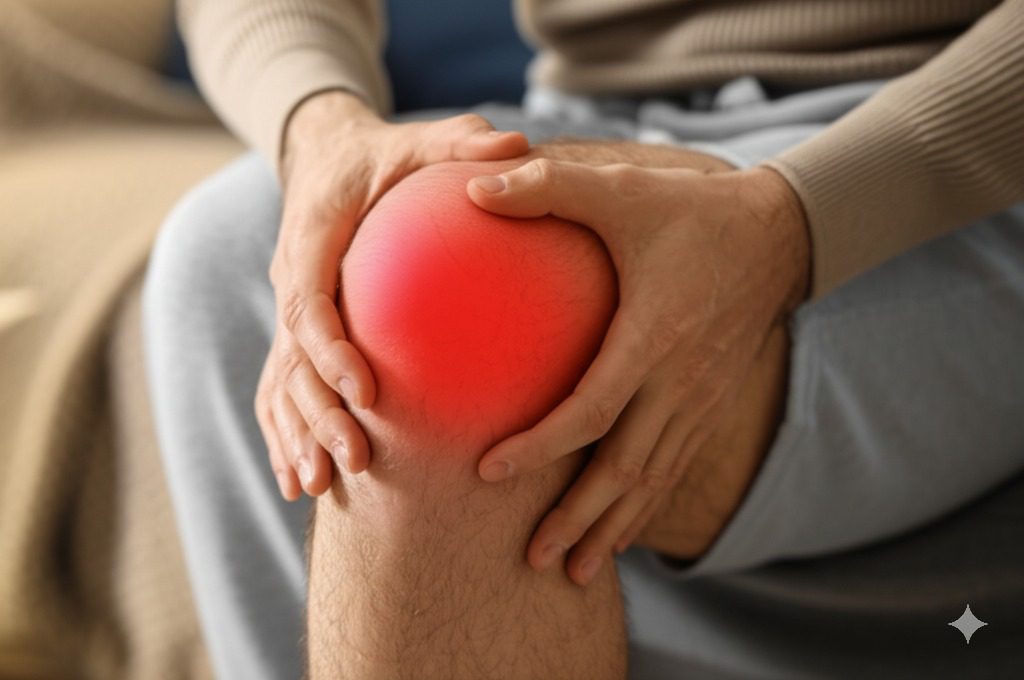
Symptoms and Signs
Recognizing the signs of joint pain is essential for seeking appropriate care. Symptoms vary depending on the cause, but several common indicators point to joint issues.
Stiffness and Swelling: Stiffness is a hallmark symptom, often noticeable after inactivity, like waking up in the morning. This “morning stiffness” can make starting the day difficult, easing with movement. For example, you might struggle to grip a coffee cup due to stiff fingers.
Swelling often accompanies stiffness due to inflammation. Excess fluid accumulates around the joint, making it appear puffy, feel warm, and sometimes look reddish. This can make your knee feel tight in jeans or your wrist too swollen to wear a watch.
Pain and Reduced Mobility: Pain is the most obvious symptom, ranging from a mild ache to severe throbbing. It can limit your ability to bend or straighten the joint. For instance, knee pain might make climbing stairs painful, while wrist pain could hinder typing or cooking.
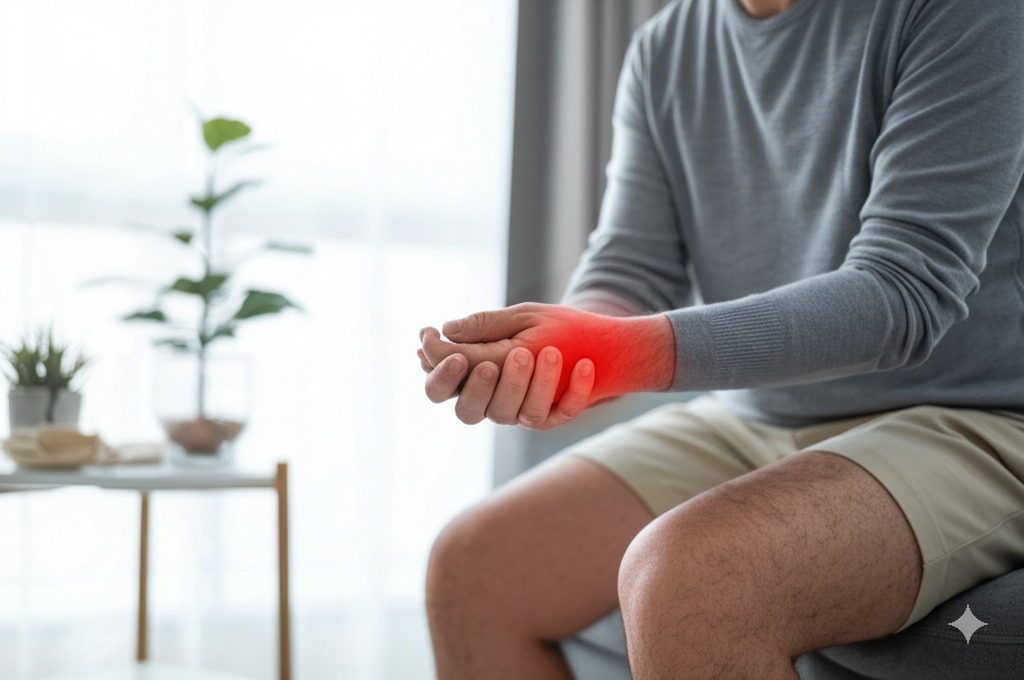
Home Remedies for Joint Pain Relief
Here are effective strategies for joint pain relief at home, focusing on exercises, natural tips, and lifestyle changes. These methods are some of the best joint pain relief methods for adults and seniors alike, offering natural joint pain relief without medication.
Exercises
Low-Impact Stretching: Gentle stretches like leg swings improve flexibility. Stand holding a chair, swing one leg forward and backward slowly, 10-15 reps per leg daily. This helps maintain hip and knee mobility without straining the joints.
Strength Exercises: Seated leg lifts strengthen muscles around joints. Sit in a chair, straighten one leg, hold for a few seconds, and lower. Do 10-15 reps per leg, 2-3 times a week. Strong muscles act as natural braces, reducing joint stress.
Yoga for Joint Pain Relief: Yoga poses like the Cat-Cow stretch can improve flexibility and reduce joint stiffness. Start on your hands and knees, inhale while arching your back (Cow pose), and exhale while rounding your spine (Cat pose). Perform for 1-2 minutes daily to support joint health.
Image: A realistic photograph of a senior (60+ years old) practicing the Cat-Cow yoga pose on a yoga mat in a bright home setting. The person is wearing comfortable workout clothes (e.g., a t-shirt and leggings), with a focused expression. The background includes a simple living room with a white wall, a small plant, and a window letting in natural light. The lighting is bright and warm, creating a calming atmosphere. The focus is on the person’s posture and the yoga mat.
Natural Tips
Hot/Cold Therapy: This is a time-tested method for joint pain relief. Heat therapy, like a warm bath or heating pad, relaxes muscles and eases stiffness. It’s best used before stretching or exercise.
Cold therapy, using ice packs or frozen vegetables wrapped in a towel, numbs the area and reduces swelling. Apply for 15-20 minutes, several times a day, especially after activity. Never apply heat or ice directly to the skin.
Other Natural Tips: Alternating hot and cold can be effective for some. Epsom salt baths combine heat with magnesium sulfate, soothing sore joints. Gentle self-massage with a warm oil, like coconut oil, also improves circulation and relieves tension.
Hydration: Drinking 8-10 glasses of water daily helps keep cartilage lubricated. Dehydration can worsen joint stiffness, so keep a water bottle handy throughout the day.
Specific Anti-Inflammatory Foods: Add turmeric and ginger to your diet for their anti-inflammatory properties. Make a turmeric tea by boiling 1 teaspoon of turmeric powder in water with a pinch of black pepper. Berries like blueberries and strawberries are also rich in antioxidants, helping reduce joint inflammation.
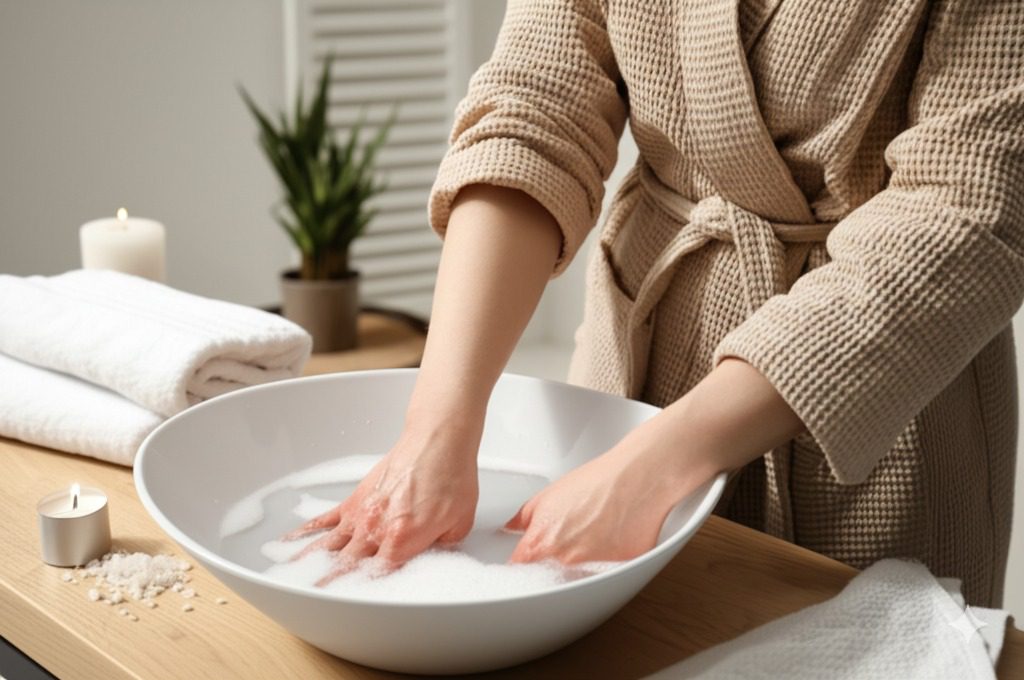
Lifestyle Changes
Maintain Healthy Weight: Losing even 5-10% of body weight reduces joint stress, especially on knees. Work with a healthcare provider to create a sustainable plan. Every pound lost can reduce the load on your knees by 4 pounds during walking.
Anti-Inflammatory Diet: Eat omega-3-rich foods (salmon, walnuts) and antioxidants (berries) to reduce inflammation, as per Healthline. Limit processed foods, sugary drinks, and red meat to minimize inflammation.
If you’re also experiencing back spasms, check out our guide on .
Joint Pain Relief for Specific Groups
Seniors: For adults over 60, low-impact exercises like water aerobics are ideal. They reduce joint stress while improving mobility. Swimming or walking in a pool can help maintain joint flexibility without the impact of land-based exercises.
Seniors should also focus on gentle stretches, like seated leg lifts, to avoid strain. Vitamin D supplements can support bone health, as deficiency is common in older adults and can worsen joint pain. Always consult a doctor before starting new routines.
Athletes: Athletes often experience joint pain due to overuse. Incorporate rest days to allow joints to recover, and use compression sleeves for support during activities. Omega-3 supplements can reduce inflammation after intense workouts, helping with recovery.
Wearing supportive athletic shoes is crucial for athletes. Shoes with good cushioning and arch support can reduce joint stress during running or jumping. Post-workout recovery exercises, like gentle stretching, can also prevent stiffness.
Office Workers: People who sit for long hours, like office workers, are prone to joint pain due to poor posture. Use an ergonomic chair with lumbar support to maintain proper spinal alignment. Take breaks every 30 minutes to stand, stretch, and walk around.
Office workers can also benefit from wrist stretches to prevent pain from typing. For example, gently pull your fingers back with the other hand to stretch the wrist, holding for 15-20 seconds. This can reduce tension in the joints.

Supportive Products
Supportive products can enhance joint pain relief, including supplements, devices, and other tools.
Supplements
Glucosamine: Supports cartilage health, available at iHerb. It may help reduce osteoarthritis pain by providing building blocks for cartilage repair. Learn more about Glucosamine What Is It Used For: Best Guide in 2025.
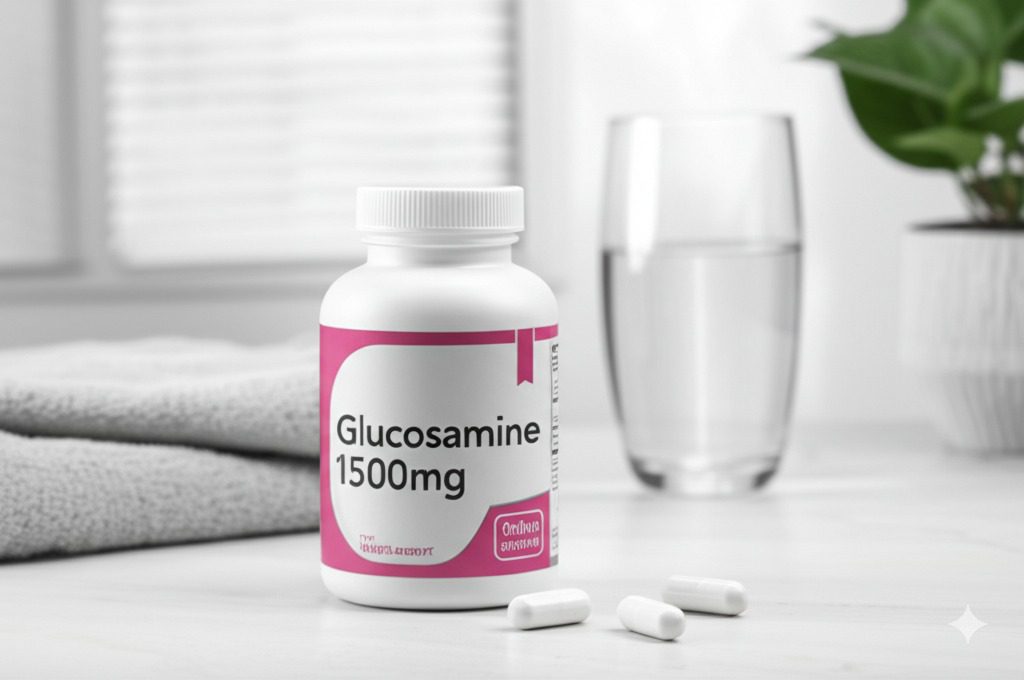
Omega-3: Reduces inflammation, found on Amazon. Omega-3 fatty acids, like EPA and DHA, can help reduce joint tenderness and morning stiffness, especially in rheumatoid arthritis.
Devices
TENS Unit: Blocks pain signals, available on Amazon. This device uses low-voltage electrical currents to provide drug-free pain relief, making it ideal for acute and chronic joint pain.
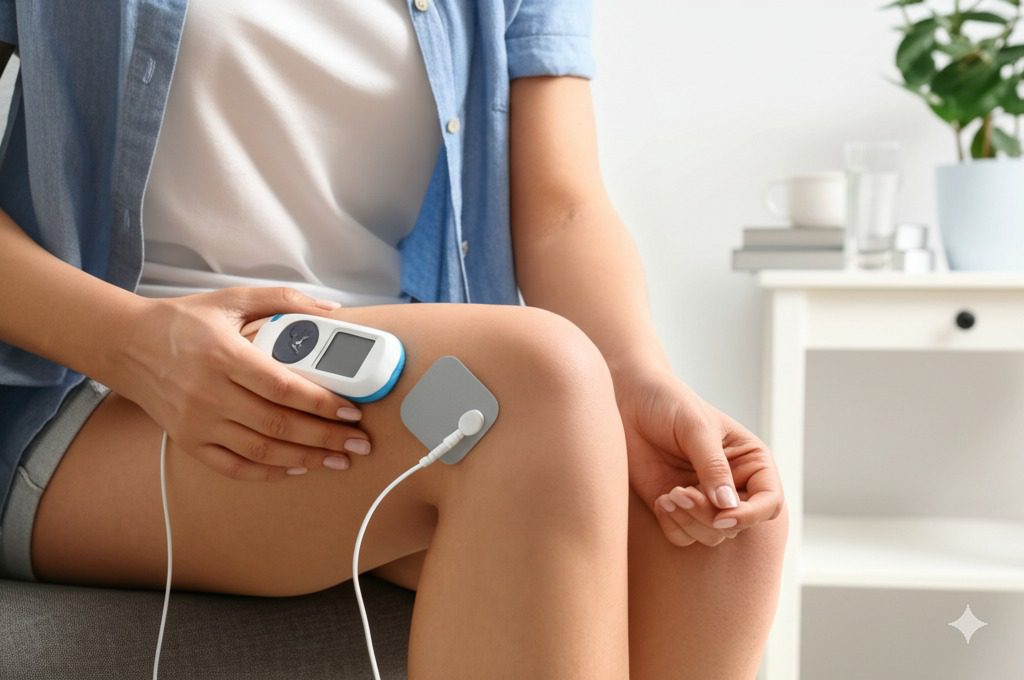
Theragun: Relieves muscle tension, via ShareASale. This percussive therapy device uses rapid pulses to improve circulation and reduce muscle tightness around joints.
Knee Braces: Knee braces provide support and stability for weak joints. They can help reduce pain during movement, especially for those with osteoarthritis or post-injury recovery. Look for adjustable braces for a custom fit.
Topical Creams: Capsaicin creams can provide temporary pain relief by numbing the area. Apply a small amount to the affected joint, following the product instructions, and avoid sensitive areas like the eyes.
Online Courses
Joint Pain Relief Course: Offers comprehensive strategies, available on ClickBank. These courses often include exercise programs, dietary advice, and stress management techniques.
Comparison Table
| Product | Key Benefit | Best For | Provider | Approx. Price Range |
|---|---|---|---|---|
| Glucosamine | Supports cartilage health | Osteoarthritis | iHerb | $15 – $40 / month |
| Omega-3 | Reduces inflammation | Inflammatory arthritis | Amazon | $20 – $50 / month |
| TENS Unit | Drug-free pain relief | Acute & chronic pain | Amazon | $30 – $100 (unit) |
| Theragun | Deep muscle relief | Muscle tightness | ShareASale | $150 – $600 (unit) |
| Knee Brace | Provides support and stability | Weak joints, recovery | Amazon | $20 – $50 (unit) |
Lifestyle Changes to Prevent Joint Pain
Preventing joint pain in the long term requires consistent lifestyle changes. Here are some practical tips to protect your joints.
Maintain Proper Posture: Poor posture, like slouching at a desk, can strain your joints over time. Sit with your back straight, shoulders relaxed, and feet flat on the floor. Use an ergonomic chair with lumbar support to maintain spinal alignment.
Wear Supportive Shoes: Shoes with good cushioning and arch support can reduce joint stress, especially in the knees and hips. Avoid high heels or flat shoes without support, as they can alter your gait and strain your joints.
Manage Stress: Chronic stress can increase inflammation in the body, worsening joint pain. Practice stress-reduction techniques like deep breathing, meditation, or yoga. Even 10 minutes a day can make a difference.
Stay Active: Regular low-impact exercise, like walking or swimming, keeps joints flexible and strengthens supporting muscles. Aim for at least 150 minutes of moderate activity per week, broken into manageable sessions.
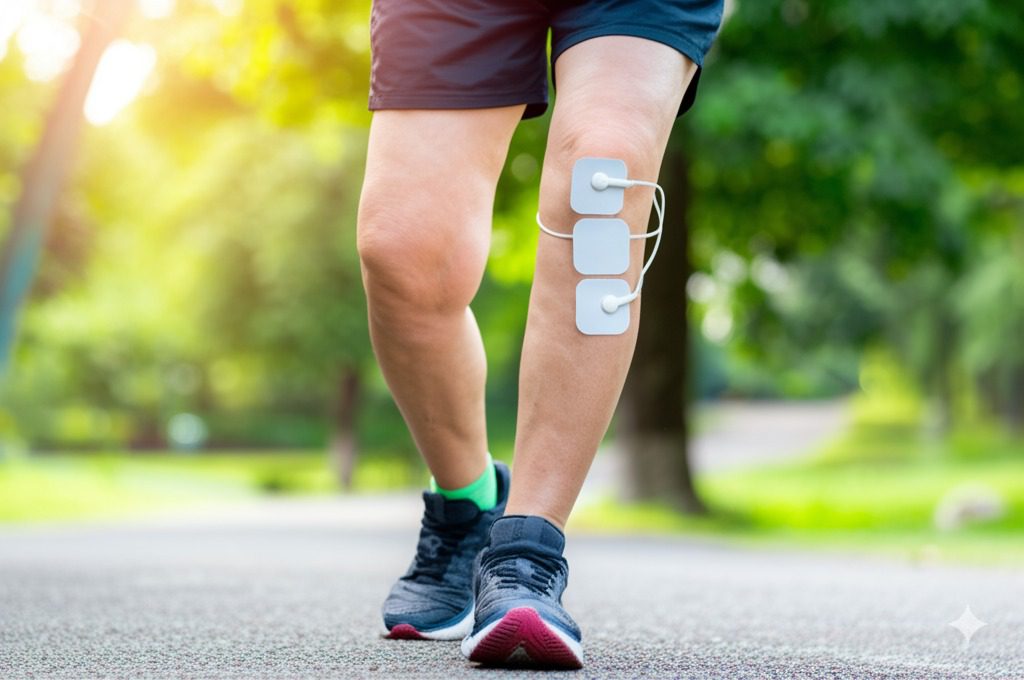
Joint Pain Relief Myths Debunked
There are many misconceptions about joint pain that can lead to ineffective management. Let’s debunk some common myths.
Myth 1: Joint Pain Always Means Arthritis
Not true. While arthritis is a common cause, joint pain can also result from injuries, overuse, or other conditions like tendinitis or bursitis. A proper diagnosis is key to effective treatment.
Myth 2: Exercise Worsens Joint Pain
Many believe exercise should be avoided with joint pain, but low-impact activities like swimming or yoga can actually help. They improve flexibility, strengthen muscles, and reduce stiffness without causing harm.
Myth 3: Joint Pain Only Affects Older Adults
Joint pain can affect people of all ages, including young athletes or those with injuries. Conditions like rheumatoid arthritis can also start in younger adults, requiring early intervention.
When to See a Doctor
Seek medical attention if you experience:
- Severe, sudden pain or swelling that prevents movement.
- Persistent pain lasting several weeks despite home care.
- Fever, unexplained weight loss, or numbness alongside joint pain.
Your doctor may recommend diagnostic tests to identify the cause of your joint pain. X-rays can reveal bone or cartilage damage, while an MRI provides a detailed view of soft tissues like ligaments and tendons. Blood tests may be used to check for autoimmune conditions like rheumatoid arthritis.
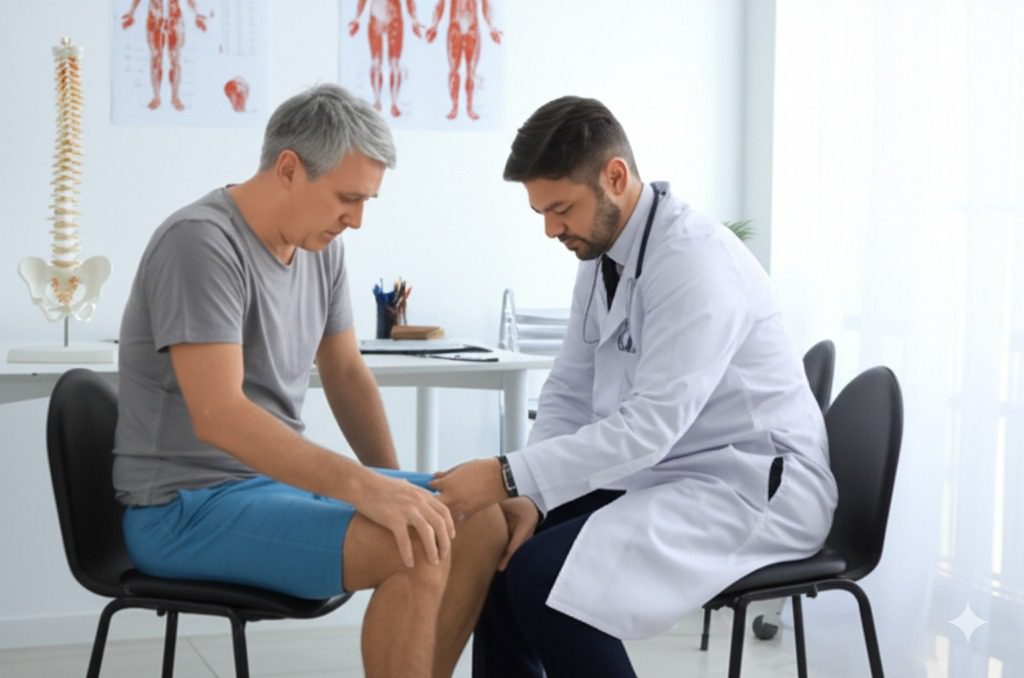
Frequently Asked Questions (FAQs)
Can joint pain heal naturally?
Yes, with rest and home care for minor issues, but chronic conditions need ongoing management.
What supplements help joint pain?
Glucosamine, omega-3, and turmeric can help reduce inflammation and support cartilage health.
Is walking good for knee joint pain?
Yes, low-impact walking helps mobility and strengthens muscles if done with supportive shoes on flat surfaces.
What are the best joint pain relief methods for seniors?
Low-impact exercises like water aerobics, stretching, and supplements like glucosamine are effective.
How can I prevent joint pain in the long term?
Maintain healthy weight, stay active, and eat an anti-inflammatory diet.
What are the best exercises for joint pain relief?
Low-impact exercises like leg swings, seated leg lifts, and yoga improve flexibility and strength.
How does an anti-inflammatory diet help with joint pain?
It reduces inflammation with foods like salmon, walnuts, and berries.
Can joint pain be a sign of a serious condition?
Yes, if paired with fever, weight loss, or numbness, it may signal infection or autoimmune disease.
Conclusion
Joint pain can be challenging, but this guide ensures you have a comprehensive resource to manage discomfort at home. From exercises and natural remedies to supportive products, there are many ways to find joint pain relief. Don’t let joint pain dictate your life—explore these methods and take control of your joint health today.